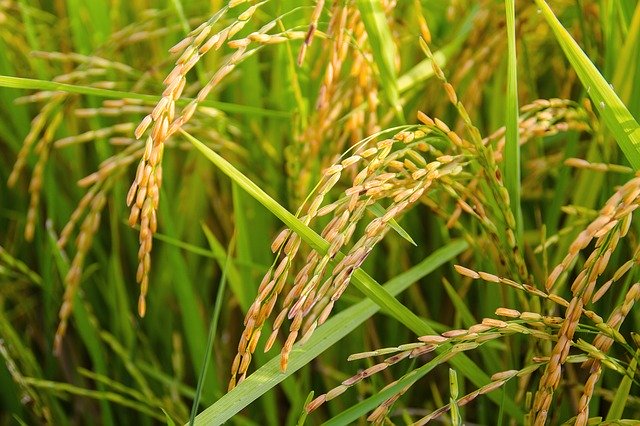




“In this study we surveyed diverse high-performing wheat varieties to see if their differences in photosynthetic performance were due to their genetic makeup or to the different environments where they were grown,” said lead researcher Dr Viridiana Silva-Perez from the ARC Centre of Excellence for Translational Photosynthesis (CoETP).
The scientists found that the best performing varieties were more than 30 percent better than the worst performing ones and up to 90 percent of the differences were due to their genes and not to the environment they grew in.
“We focused on traits related to photosynthesis and found that some traits behaved similarly in different environments. This is useful for breeders, because it is evidence of the huge potential that photosynthesis improvement could have on yield, a potential that hasn’t been exploited until now,” says Dr Silva-Perez.
During the study, published recently in the Journal of Experimental Botany, the scientists worked in Australia and Mexico, taking painstaking measurements in the field and inside glasshouses.
“The results that we obtained from our “Photosynthesis Olympics”, as we like to call them, are very exciting because we have demonstrated that there is scope to make plants more efficient, even for varieties working in the best conditions possible, such as with limited water and fertiliser restrictions. This means for example, that breeders have the potential to get more yield from a plant with the same amount of nitrogen applied,” says CoETP Director Professor Robert Furbank, one of the authors of this study.
Photosynthesis – the process by which plants convert sunlight, water and CO2 into organic matter – is a very complex process involving traits at different levels, from the molecular level, such as content of the main photosynthetic enzyme Rubisco, to the leaf, such as nitrogen content in the leaf and then to the whole canopy.
“This work is an important result for the CoETP, which aims to improve the process of photosynthesis to increase the production of major food crops such as wheat, rice and sorghum. There is a huge amount of collaboration, both institutional and interdisciplinary, that needs to take place to achieve this type of research. Without the invaluable cooperation between statisticians, plant breeders, molecular scientists and plant physiologists, we would have never achieved these results,” says co-author Tony Condon from CSIRO and the CoETP.
Read the paper: Journal of Experimental Botany
Article source: Arc Centre Of Excellence For Translational Photosynthesis
Author: Natalia Bateman
Image credit: Dr Viridiana Silva-Perez/COETP



Use of saline water to irrigate crops would bolster food security for many arid countries; however, this has not been possible due to the detrimental effects of salt on plants. Now, researchers at KAUST, along with scientists in Egypt, have shown that saline irrigation of tomato is possible with the help of a beneficial desert root fungus. This represents a new key technology for countries lacking water resources.
“Salt in irrigation water is one of the most significant abiotic stresses in arid and semiarid farming,” says former KAUST postdoc Mohamed Abdelaziz, who worked on the project team alongside Heribert Hirt. “Improving plant salt tolerance and increasing the yield and quality of crops is vital, but we must achieve this in a sustainable, inexpensive way.”
The root fungus Piriformospora indica forms beneficial symbiotic relationships with many plant species, and previous research indicates it boosts plant growth under salt stress conditions in barley and rice. While initial studies suggest the fungus can improve growth in tomato plants under long-term saline irrigation, the mechanisms behind the process are unclear. Also, little is known about the fungal-plant interaction throughout the entire growing season.
“Plant salt tolerance is a complex trait influenced by many factors,” says Abdelaziz. “The salt-tolerance mechanism depends on the correct activation of salt tolerance genes, stresses on cell membranes and the buildup of toxic sodium ions. We monitored growth performance over four months in tomato plants colonized with P. indica and in an untreated control group, both grown commercial style in greenhouses. We examined genetic and enzymatic responses to salt stress in both groups.”
The main threat to plants under salt stress is the buildup of sodium ions, which affects plant metabolism, and leaf and fruit growth. For example, excessive sodium in shoots and roots disrupts levels of potassium, which is vital for multiple growth processes from germination to enzyme activation.
The team showed that colonization by P. indica increased the expression of a gene in leaves called LeNHX1, one of a family of genes responsible for removing sodium from cells. Furthermore, potassium levels in leaves, shoots and roots of the P. indica group were higher than in controls. P. indica also increased levels of antioxidant enzyme activity, offering further protection.
“Colonization with P. indica boosted tomato fruit yield by 22 percent under normal conditions and 65 percent under saline conditions,” says Abdelaziz. “Colonizing vegetables provides a simple, low-cost method suitable for all producers, from smallholders to large-scale farming.”
Read the paper: Scientia Horticulturae
Article source: KAUST
Image credit: Capri23auto / Pixabay




World leaders gather for the UN General Assembly on the 25th September, hundreds of emerging leaders focused on fighting global inequality came together at the Bill & Melinda Gates Foundation’s third annual Goalkeepers event in New York City. Among them, University of Illinois scientist Amanda De Souza highlighted a crop of inequality called cassava, which has starchy, tuberous roots that sustain more than 500 million people in sub-Saharan Africa, yet cassava has been largely neglected by research and development compared to the staple crops of wealthier regions. Recently, De Souza and a team from Realizing Increased Photosynthetic Efficiency (RIPE) published a study in New Phytologist that identified opportunities to improve cassava yields—which have not increased for more than fifty years in Africa.
“For smallholder farmers who depend on tiny plots of land to feed and support their families, cassava is a ‘backup’ crop when other crops fail,” De Souza said at Goalkeepers, where she described her work to improve cassava through the RIPE project. “Especially for women, who represent a majority of smallholder farmers, cassava is a savings account. It is a resource they can harvest all year to pay for things like medical treatments and their children’s school fees.”
The RIPE project is an international effort to develop more productive crops by improving photosynthesis—the natural, sunlight-powered process that all plants use to fix carbon dioxide into carbohydrates that fuel growth, development, and ultimately yields.
Led by RIPE researchers at Illinois and Lancaster University, this study examined factors that limit photosynthesis in 11 popular, or farmer-preferred, African varieties of cassava with the goal to eventually help cassava overcome photosynthetic limitations to boost yields.
First, the team examined the photosynthetic limitations of cassava exposed to constant high levels of light, like a plant would experience at midday with cloudless skies. In these conditions, and like many crops, cassava’s photosynthesis is limited (by as much as 80 percent) by two factors: One half is due to the low speed that carbon dioxide molecules travel through the leaf to reach the enzyme that drives photosynthesis, called Rubisco. The other half is because Rubisco sometimes fixes oxygen molecules by mistake, wasting large amounts of the plant’s energy.
Next, the team evaluated the limitations of photosynthesis under fluctuating light conditions. Surprisingly, and unlike most crops, Rubisco was not the primary limiting factor when leaves transitioned from shade to sunlight, like when the sun comes out from behind a cloud. Instead, cassava is limited by stomata, which are microscopic pores on the surface of leaves that open to allow carbon dioxide to enter the plant but at the cost of water that escapes through these same pores. Stomata are partially closed in the shade and open in response to light when Rubisco is active.
“Rubisco is the major limiting factor during this transition from shade to light for most plants, including rice, wheat, and soybean,” De Souza said. “Cassava is the first crop that we have found where stomata limit photosynthesis during these light transitions more than Rubisco.”
Illinois’ Postdoctoral Researcher Yu Wang created a computer model to quantify how much cassava would gain by overcoming this limitation. According to the leaf-level model, if stomata could open three times faster, cassava could fix 6 percent more carbon dioxide each day. In addition, cassava’s water use efficiency—the ratio of biomass produced to water lost by the plant—could be improved by 16 percent.
In addition, the team found that it takes as long as 20 minutes for cassava to transition from shade to full light and reach the maximum rate of photosynthesis, which is quite slow compared to other crops such as rice that can transition in just a few minutes. However, the fastest variety of cassava could transition almost three times faster and fix 65 percent more carbon dioxide into carbohydrates than the slowest variety. Closing this gap is another opportunity to improve cassava’s productivity.
“Plants are constantly moving from shade to light as leaves shift and clouds pass overhead,” said RIPE Director Stephen Long, Ikenberry Endowed University Chair of Crop Sciences and Plant Biology at Illinois’ Carl R. Woese Institute for Genomic Biology, who contributed to this study. “We hope that the variation that we discovered during these light transitions among cassava varieties can be used to identify new traits, and therefore opportunities for us to improve cassava’s photosynthetic efficiency and yield potential.”
2019 marks the third year of Goalkeepers, an initiative dedicated to accelerating progress towards the Global Goals. The Goalkeepers annual event in New York is a gathering of approximately 400 world leaders, global activists, and community changemakers, using powerful stories, data and partnerships to highlight progress achieved, hold governments accountable and bring together a new generation of leaders to address the world’s major challenges.
Read the paper: New Phytologist
Article source: Carl R. Woese Institute for Genomic Biology, University of Illinois at Urbana-Champaign
Image credit: Bishnu Sarangi / Pixabay